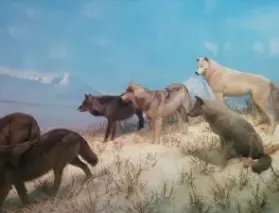 Deep in the mountains of South Korea, a cicada hummed its last. Walking along the roadside, I saw a spider fall upon it with its venomous mandibles. Caught in the web, it had no escape, and cried:
Deep in the mountains of South Korea, a cicada hummed its last. Walking along the roadside, I saw a spider fall upon it with its venomous mandibles. Caught in the web, it had no escape, and cried:
hum…
hum…
silence
I stood equally silenced as the spider carried off the corpse into the splintered bark of a dead maple. It occurred to me that one day I too would sing the silence of my last song.
Death happens. It’s a truth so true it’s cliche. Yet, certain experiences have the power to make the truth visceral again. They blow away the dust that obscures it, and make it real again. They force us to confront mortality.
How do naturalists make sense of death?
Since naturalists avoid supernatural concepts, there is little room for an immortal “soul” that somehow survives death. In the wake of this, there seem to be three principle ways of coming to terms with death.
- death makes life meaningful
- we live on through our effects on the world: memories, descendents, and influences we leave behind
- we live on through that part of us which is immortal: the physical constituents of our bodies that disassemble and reassemble into myriad new forms tumbling throughout the Cosmos
Death makes life meaningful
Brendan Myers writes:
Not death, but immortality, confers absurdity and meaningless. There is nothing an immortal could do, or build, or achieve, that would outlast him.
In a somewhat similar vein, a New Scientist article published just last week maintains that much of civilization’s accomplishments have been motivated by an awareness of our mortality.
The first principle may also underlie the Epicurean view of death, which sees the death event as a non-experience (something we anticipate but never actually experience, since we no longer have living bodies with which to experience it), and focuses instead on leading a worthwhile existence while yet alive.
We live on through effects on the world
Myers places still more emphasis on the second principle, advocating living a life whose story is worthy of being told (whether or not it is actually told). He calls this goal apotheosis:
…you can be responsible for living in such a way that others ought to uphold your life as a model of excellence which future generations can learn from, and perhaps emulate.
By leaving behind a legacy, be it children, a novel, or the enhanced lives of those known in life, we live on through our effects on the world.
Immortality as part of the Cosmos
The third principle identifies with the matter of the body, which decomposes and recomposes into myriad new forms.
This was involved in the teachings of some Stoics that upon death our bodies dissolve into the elements and thus rejoin the cosmic logos.
A similar, if updated, view is exalted in Oscar Wilde’s poem Panthea:
So when men bury us beneath the yew
Thy crimson-stained mouth a rose will be,
And thy soft eyes lush bluebells dimmed with dew,
And when the white narcissus wantonly
Kisses the wind its playmate some faint joy
Will thrill our dust, and we will be again fond maid and boy.
The same principle would also seem to underlie the meaning of death as part of the circle of life, as expressed in Disney’s The Lion King:
- Mufasa: “Everything you see exists together in a delicate balance. As king, you need to understand that balance and respect all the creatures, from the crawling ant to the leaping antelope.”
Young Simba: “But, Dad, don’t we eat the antelope?”
Mufasa: “Yes, Simba, but let me explain. When we die, our bodies become the grass, and the antelope eat the grass. And so we are all connected in the great Circle of Life.”
Beyond the individual
What people fear most about death is probably the cessation of the sense of “me.” Notably, all three principles cease to dwell exclusively upon the continuation of this “me” in linear time, and reach toward something that transcends the individual personality.
Subscribe to The Spiritual Naturalist Society
Learn about Membership in the Spiritual Naturalist Society
__________
The Spiritual Naturalist Society works to spread awareness of spiritual naturalism as a way of life, develop its thought and practice, and help bring together like-minded practitioners in fellowship.
__________
Written by B.T. Newberg. This article first appeared at HumanisticPaganism.com.














